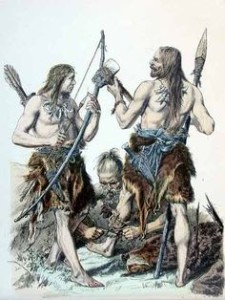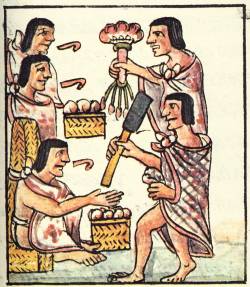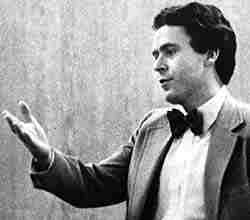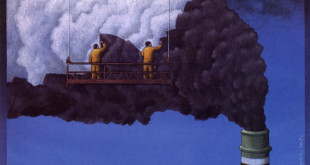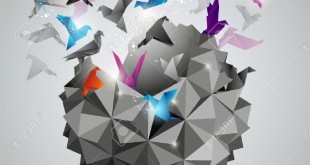Just take a look in your wardrobe, what do you see? My wardrobe is neatly organized with clothing for all occasions, let it be a marriage or a funeral. Society has taught me to follow trends, and idolize the trendsetters, and they’ll be my role models and decide my dress code for me even when I don’t want it to be. Some follow the trend setters blindly and consider it as progress, a thing to be proud of. Yes, just maybe our ability to create variety for simple things makes us geniuses.
So what’s the problem? Why this sudden outburst? You might ask.
Before I elaborate on that, let me explain to you the history of clothing in an extremely brief manner. It’s important to look back in history to understand the present. So it all started with the shedding of hair, yes believe it or not. Different institutions will give you illogical explanations, but it all started with humans shedding their hair. To protect themselves from the heat, cold, rain and other things that could damage our sensitive skin, clothing made out of leaves and animal skin came into existence. Ah, the glory days were when we didn’t exploit nature according to our greed and rather worked in harmony with it.
Let’s fast forward and take a peek in the time when man started to form tribes and small communities as he explored agriculture. So how was clothing then? This era was when man started to make clothing out of more complex materials which he shaped and molded. We started weaving clothes around 27,000 years ago. Ancient Egyptians produced linen around 5500 BC while the Chinese likely started producing silk around 4000 B.C. Clothing became a means to express, who you are and what you were capable of doing. It formed the basis of identification in society so that responsibilities could be distributed accordingly in a flexible and open manner. This was more like a social stratification rather than a form of discrimination or categorization.
Clothing then was simple, easy to produce and simpler to wear in public. It served two main functions: 1) to protect & 2) to identify.
The second function was a means to comprehend, contemplate and understand who a specific person was and what his position was in society, but there was no discrimination. Rather, it was to avoid misunderstanding between roles and responsibilities. This can be seen in the Aztec Tribe, where slaves wore a simple loincloth while the upper classes in society wore gold-covered intricate headdresses adorned with precious gems and animal skins which covered their bodies. Traces of the modern day “trend-based clothing” can be seen in the ways in which the Aztec military personnel used to dress, with generals having more experience allowed to wear more jewels and vice versa.
Now, let’s try and fast forward a bit more. The desire to express ourselves through our appearance blinded mankind when there was an abundance of clothing. I am talking about the industrial revolution where clothing took on a whole new meaning altogether. Earlier, clothing involved merely draping a piece of cloth around your shoulders and pinning it to the waist. Later, thanks to the industrial revolution, variety emerged with different colors, shades, types of material, buttons, and other accessories coming into existence. It was to suit preferences, different personalities, and explore what else was possible.
Fashion, fashion was born, and I am fine with that too. Now is where I tell you the actual problem, yes I like to beat around the bush before I come to the point. My problem is categorization according to what you wear.
There’s a huge difference between understanding someone by their clothing and categorizing them according to what they wear. You set limitations for the person you categorize.
I always thought people who wore lungi were people who sold fish and lived in huts. But I was dead wrong, people who wear lungis are doctors, businessmen and filthy rich in short.
A boy who wears pajamas is considered lazy and not taken seriously when he talks about bringing a change in the world. But you know he earns more money than the man who didn’t take him seriously.
You look at a woman wearing a skirt, and you quickly assume that she can speak English but totally ignore the hijab-wearing girl right next to her who is capable of winning a rap battle, in British accent even though she is an Indian.
Yes and the same old notion of modesty and decency being limited to your clothes. WHY people?
Don’t even get me started on terrorism and clothing. Heard of Ted Bundy? Handsome looking guy right? Women actually found him to be dressed decently and fell into his trap as he lured and murdered them, then did horrible stuff to their dead bodies.
On a personal note, this has happened so very often that people assume I cannot understand English or have a good command over English just because I wear a black cloth to cover myself according to my religion.
Oh, and my community doesn’t fall short for categorizing either.
Long scarves reaching knees = religious. Short scarves reaching the neck = modern. Medium length scarves, reaching your shoulders = moderate.
Are you kidding me right now? You know they have set a limitation when they give you that look of despair. As if that’s bloody it, you have no scope of improvement.
The solution to this problem is nothing idealistic, nor too vague. I have practiced it and it works. Learn from the ancestors; nakedness is not unnatural.
First, it starts with you as a person, don’t dress to impress.
Second, next time you look at anybody, you have all the right to identify him or her like people in the past. But don’t set limitations, don’t underestimate that person’s ability. Do not freak out. You never know the beggar on the street will be the next best seller poet.
Further Tripping….
 The Holy Connection An Alternative Exploration of Existence
The Holy Connection An Alternative Exploration of Existence

